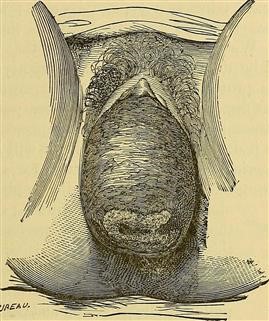The Infertility Org
Infertility Prevalence 2017
You found the best source for total information and resources for Infertility Prevalence 2017 on the web.
The new definitions drawn up by WHO’s international committee monitoring assisted reproductive technology will be sent to every health minister for consideration next year.Sterility, also referred to as infertility, is defined as an inability to conceive a child after trying to do so for at least one year. Obese women have a higher rate of recurrent, early miscarriage compared to non-obese women. Clinical Characterization of 42 Oligospermic or Azoospermic Men with Microdeletion of the AZFc Region of the Y Chromosome, and of 18 Children Conceived via ICSI. (PDF, 606 KB) Human Reproduction, 2002.
It has not been shown to improve patient outcomes but, rather, is helpful for research purposes. Then, generally one or two embryos, which have demonstrated appropriate development, are carefully and gently transferred into the uterine cavity. However, about one in five cases of infertility has no clear diagnosed cause.[73] In Britain, male factor infertility accounts for 25% of infertile couples, while 25% remain unexplained. Pregnancy after Vasovasostomy for Vasectomy Reversal: A Study of Factors Followed for 10 Years. (PDF, 3 MB)Human Reproduction, 1989. Treatment of the cause: 28. Tubal and uterine factors: 4.
More Details About Infertility Prevalence 2017

Even more Details Around Best Infertility Hospitals in India
They can also carry out some basic tests on both partners to see if there is an identifiable reason for not having achieved a pregnancy. The epididymis is a coil-like structure in the testicles which helps store and transport sperm. Unexplained infertility In the UK, unexplained infertility accounts for around 25% of cases of infertility.
Right here are Some Even more Resources on Infertility Prevalence 2017
This leads to the final maturation and release of the egg. Understanding the normal reproductive process is essential in knowing when to seek help. The types of ART include: In Vitro Fertilization (IVF) Gamete Intrafallopian Transfer (GIFT) Zygote Intrafallopian Transfer (ZIFT) Another ART procedure – Intracytoplasmic Sperm Injection (ICSI) – is used mainly in cases of male infertility to treat couples who cannot achieve fertilization due to the male partner’s extremely low number of normal, viable sperm. They can often recommend a counselor and others who can offer appropriate support.
Below are Some Even more Resources on Infertility Prevalence 2017
The pathophysiology of the disease is not well understood, but a massive extravascular accumulation of fluid occurs that is associated with a severe depletion of the intravascular volume responsible for dehydration, hemoconcentration, and electrolyte imbalance (ie, hyponatremia, hyperkalemia). [193] Ovarian hyperstimulation syndrome can be mild, moderate, or severe. [194] Mild ovarian hyperstimulation syndrome is characterized by ovarian enlargement (up to 5-12 cm in diameter), minimal ascites, and weight gain of less than 10 lb. This process bypasses the normal fertilization process, which may be compromised due to poor sperm function. A sperm analysis can be done to check a man's sperm count and the overall health of the sperm.Infertility is the inability of a person, animal or plant to reproduce by natural means. Partners may become more anxious to conceive, increasing sexual dysfunction.[17] Marital discord often develops, especially when they are under pressure to make medical decisions. The Effect of Female Age and Ovarian Reserve on Pregnancy Rate in Male Infertility: Treatment of Azoospermia with Sperm Retrieval and Intracytoplasmic Sperm Injection. (PDF, 66 KB) Human Reproduction, 1997. Inhibin B levels have been reported to decrease with increasing weight, which results in decreased Sertoli cells and sperm production. Common causes of infertility of females include: ovulation problems (e.g. polycystic ovarian syndrome, PCOS, the leading reason why women present to fertility clinics due to anovulatory infertility.[58]) tubal blockage pelvic inflammatory disease caused by infections like tuberculosis age-related factors uterine problems previous tubal ligation endometriosis advanced maternal age immune infertility Males[edit] The main cause of male infertility is low semen quality. Used by some clinicians to evaluate the motility of the sperm and its ability to travel through the cervical mucus. Unexplained Even after a full fertility work-up, for one in five couples an exact cause of infertility cannot be determined. Fertilizing Capacity of Epididymal and Testicular Sperm with ICSI. (PDF, 5 MB) Frontiers in Endocrinology, 1995. Then, generally one or two embryos, which have demonstrated appropriate development, are carefully and gently transferred into the uterine cavity. As the major causes of infertility are sperm abnormalities, ovulation dysfunction, and fallopian tube obstruction, the preliminary adviced investigations for the infertile couple should be focused on semen analysis (to be compared with the WHO reference values [27]), detection of ovarian function by hormonal assay (early follicular FSH and LH levels, and mid-luteal progesterone), and evaluation of tubal patency by hysterosalpingography (HSG) [17-32], (Appendix 3). A postoperative HSG should be performed 2 months later. Pulsatile GnRH and HCG have been used but result in only 20% achieving complete spermatogenesis. Demographic definitions of infertility An inability of those of reproductive age (15-49 years) to become or remain pregnant within five years of exposure to pregnancy. (DHS2) An inability to become pregnant with a live birth, within five years of exposure based upon a consistent union status, lack of contraceptive use, non-lactating and maintaining a desire for a child. (Trends in prevalence4). Expectant therapy Expectant therapy should be based on a complete workup with diagnosis of very early stages of the disease (minimal) in patients without clinical symptoms, ie, an incidental finding. [145] A second-look laparoscopy is required for follow-up observation within 6-18 months.
Previous Next
See also
Infertility Treatment in Kannada
Infertility Insurance North Carolina
Infertility Humor Pictures